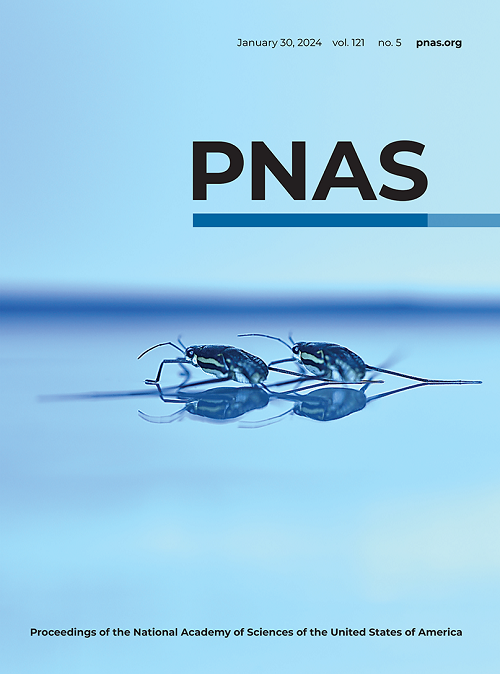跳树虫的电感受:极端形态如何增加电敏感性
IF 9.4
1区 综合性期刊
Q1 MULTIDISCIPLINARY SCIENCES
Proceedings of the National Academy of Sciences of the United States of America
Pub Date : 2025-07-21
DOI:10.1073/pnas.2505253122
引用次数: 0
摘要
生物体形态的形式和功能之间的联系通常是显而易见的或直观的。然而,一些生物分支在形态上表现出显著的多样性,往往表现出极端的形态,但没有明显的功能解释。树跳虫(膜跳科)是昆虫中的一个例子,表现出惊人的形态多样性,导致了极端形式的过剩。到目前为止,这些形态末端的功能及其进化的原因在很大程度上仍然是个谜。然而,根据许多动物通过静电驱动其身体上的机械感觉结构来探测空气中的电场的能力,可以考虑这个谜团。重要的是,这些机械感觉结构所经历的电场强度,根据物理学的预期,取决于动物的几何形状,尖锐和细长的特征产生最高的电场。因此,我们假设树跳虫的极端形态增加了它们的电敏感性。在这里,我们展示了跳树虫,以及它们的捕食者和互惠主义者,产生电场,而跳树虫可以探测到电场,并做出行为反应。我们还证明了掠食性黄蜂和共生蜜蜂在静电剖面上有很大的不同,这表明树跳虫可能获得复杂的电信息。然后利用生物物理、计算和数学技术来提供证据,证明树跳虫的前角是电接收的部位,其极端的形状可能会增强其对电的敏感性。本文章由计算机程序翻译,如有差异,请以英文原文为准。
Electroreception in treehoppers: How extreme morphologies can increase electrical sensitivity
The link between form and function of an organism’s morphology is usually apparent or intuitive. However, some clades of organisms show remarkable diversity in their form, often exhibiting extreme morphologies, but with no obvious functional explanation. Treehoppers (Membracidae) are a family of insects that exemplify this, displaying an astounding morphological diversity, resulting in a plethora of extreme forms. The function of these morphological extremities and the reasons for their evolution have thus far remained largely enigmatic. However, this mystery can be considered in light of the capacity of many animals to detect electric fields in air via electrostatic actuation of mechanosensory structures on their body. Importantly, the strength of the electric field experienced by these mechanosensory structures is expected by physics to depend on the animal’s geometry, with sharp and elongated features producing the highest electric fields. Therefore, we hypothesize that the extreme morphologies of treehoppers increase their electrical sensitivity. Here, we show that treehoppers, along with their predators and mutualists, produce electric fields and that the treehopper Poppea capricornis can detect electric fields, responding behaviorally. We also demonstrate that predatory wasps and mutualist bees differ significantly in their electrostatic profiles, pointing to the sophistication of electrical information potentially available to treehoppers. Biophysical, computational, and mathematical techniques are then utilized to provide evidence that the pronotum of treehoppers is the site of electroreception and that its extreme shapes may enhance its sensitivity to electricity.
求助全文
通过发布文献求助,成功后即可免费获取论文全文。
去求助
来源期刊
CiteScore
19.00
自引率
0.90%
发文量
3575
审稿时长
2.5 months
期刊介绍:
The Proceedings of the National Academy of Sciences (PNAS), a peer-reviewed journal of the National Academy of Sciences (NAS), serves as an authoritative source for high-impact, original research across the biological, physical, and social sciences. With a global scope, the journal welcomes submissions from researchers worldwide, making it an inclusive platform for advancing scientific knowledge.

 求助内容:
求助内容: 应助结果提醒方式:
应助结果提醒方式:


